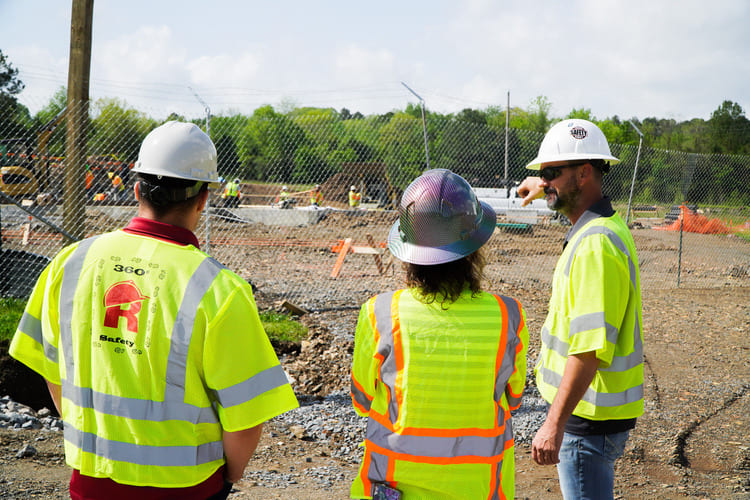When most people think about construction, they most likely picture the wooden frame of a building, and people working in orange vests and hard hats.
It’s true that the construction site and the people working on it are indispensable, but construction is much more complex and multifaceted than the average person might realize. The construction industry relies on the principles of design to create successful projects that are functional, aesthetically pleasing, safe, and structurally sound.
Design elements in construction play an important role in achieving these goals. Understanding and acknowledging the various elements of design that go into the construction process, and their significance, makes a big difference in the success of a project.
1. Site planning
Before any actual construction can take place, the selection and organization of a construction site must be thoroughly planned.
Proper site planning takes into account factors like topography (a study of the natural features of an area, like hills or bodies of water), climate, accessibility, and environmental impact.
Architects and designers must consider how the building will interact with its surroundings, and ensure that it harmonizes with the natural landscape while adhering to local regulations.
2. Space and layout
The arrangement and layout of a building are essential aspects of construction design. Architects and designers must use space to meet the functional requirements of the structure while ensuring that users will find the space comfortable and convenient.
Effective space planning also considers future flexibility and adaptability, allowing for future changes in occupancy or function over time.

3. Structural integrity
Without structural integrity, the buildings we live in and use every day simply couldn’t exist or be functional. The design of a building’s framework, including its foundation, load-bearing walls, and support structures, must ensure the safety and stability of the entire structure.
Structural engineers use advanced techniques and materials in order to meet safety standards while minimizing costs wherever possible– no easy feat!
4. Material selection
Choosing the right construction materials makes a big impact on a building’s durability over time, its aesthetics, and its environmental sustainability. Designers need to consider factors like climate, maintenance requirements, and environmental impact when selecting building materials.
Sustainable materials and practices, like using recycled or locally sourced materials, are becoming increasingly important in modern construction design.

5. Aesthetic appeal
Aesthetic considerations are integral to construction design. The visual appeal of a building can greatly influence its success and the user’s experience. Elements like color, texture, shape, and architectural style must fully align with the project’s goals and the preferences of its users.
Striking a balance between functionality and aesthetics is key to creating a successful design.
6. Accessibility and universal design
Inclusive design is an important element in modern construction. Ensuring that buildings are accessible to individuals with disabilities or differing needs promotes equality and inclusivity. Designers must consider features like ramps, elevators, wider doorways, and accessible restrooms to accommodate people of all abilities and adhere to ADA standards.
The building blocks of construction
The design elements listed here are all necessary to create a successful, sustainable structure. Architects, engineers, and builders must consider a wide range of factors before the soil on a construction project is even broken.
By carefully integrating the above elements, construction professionals can create buildings that are functional, accessible, environmentally responsible, and beautiful.
If you’d like to be a part of this process and construct buildings for your community to use, we’re hiring! Check out our current job openings here.


Recent Comments